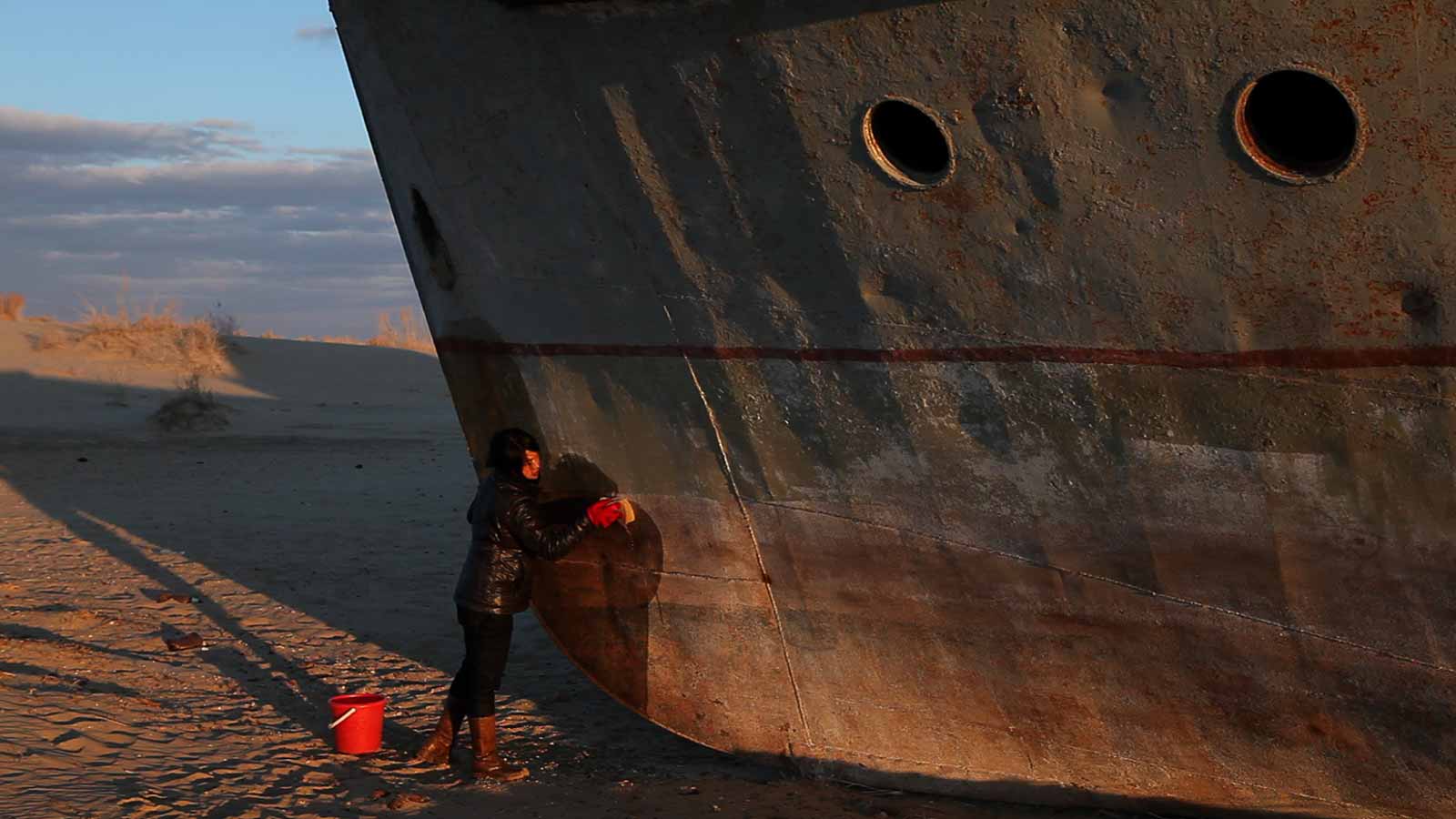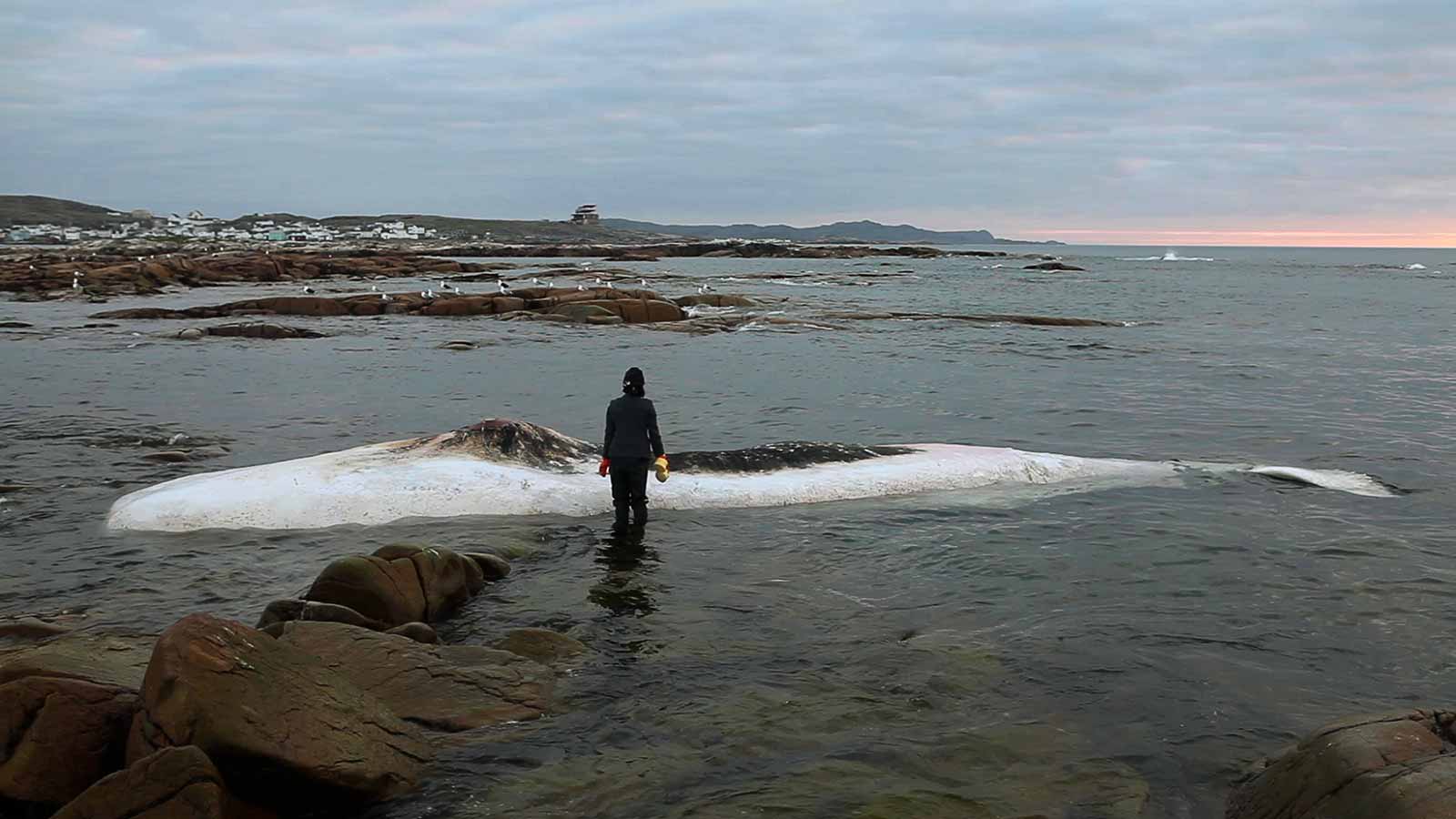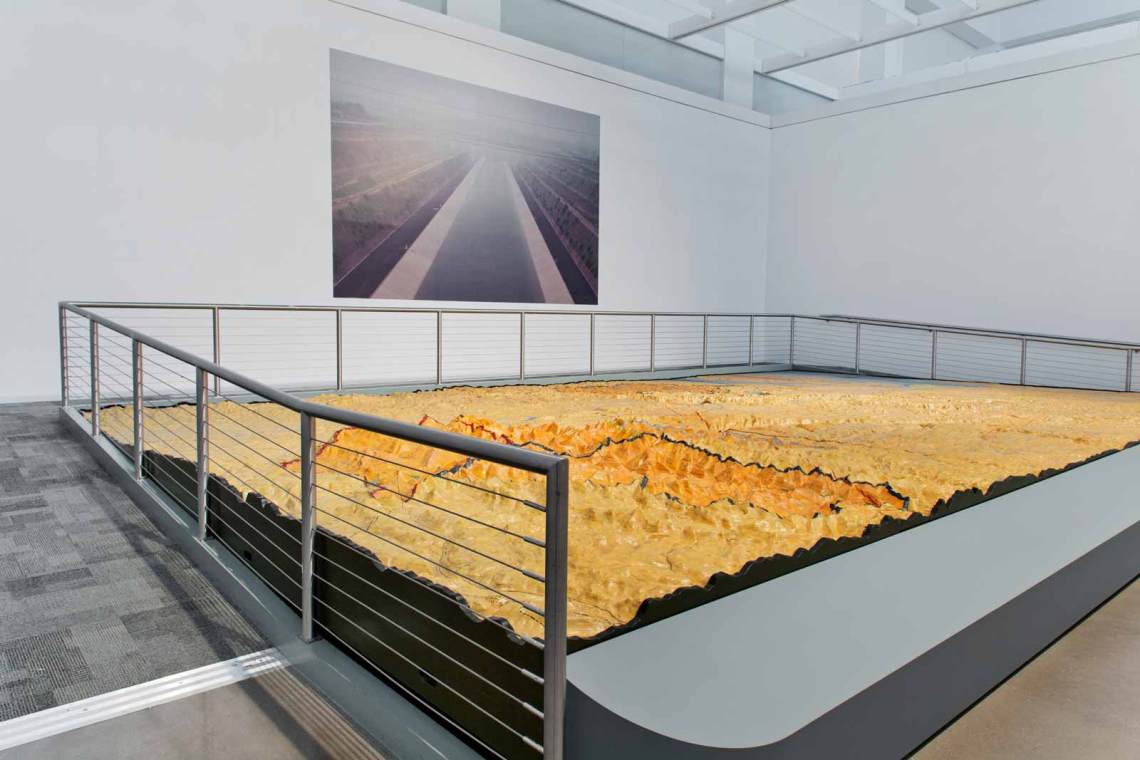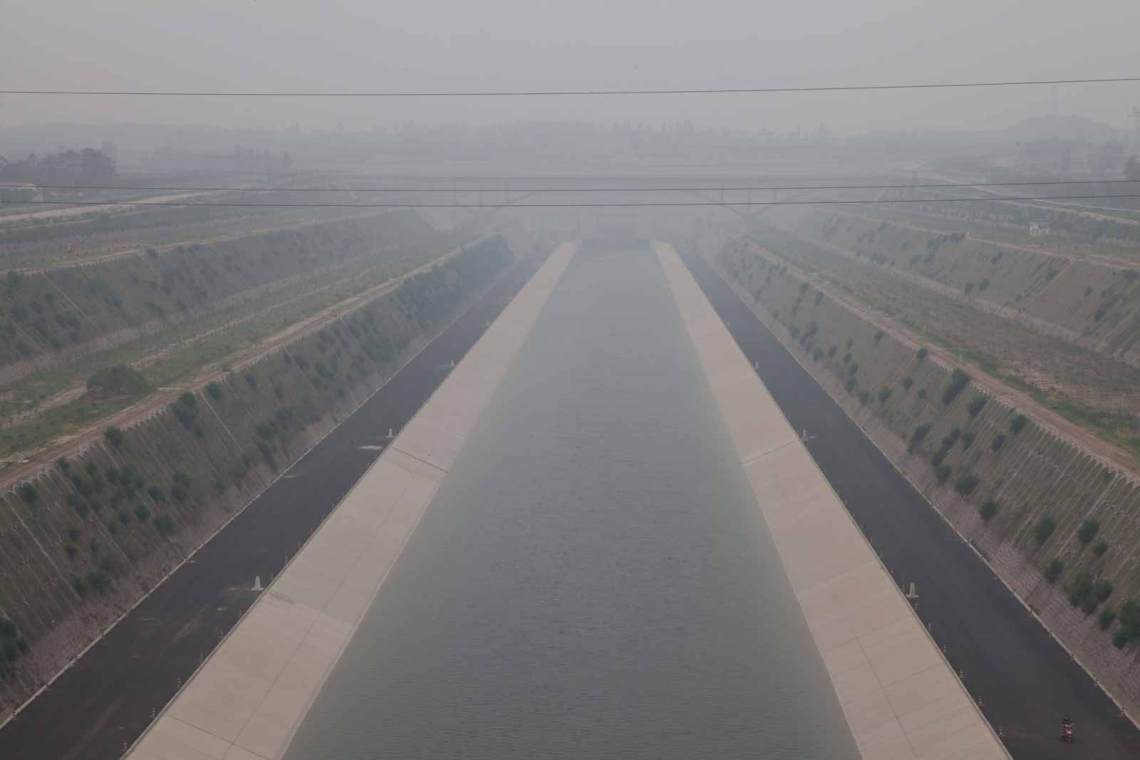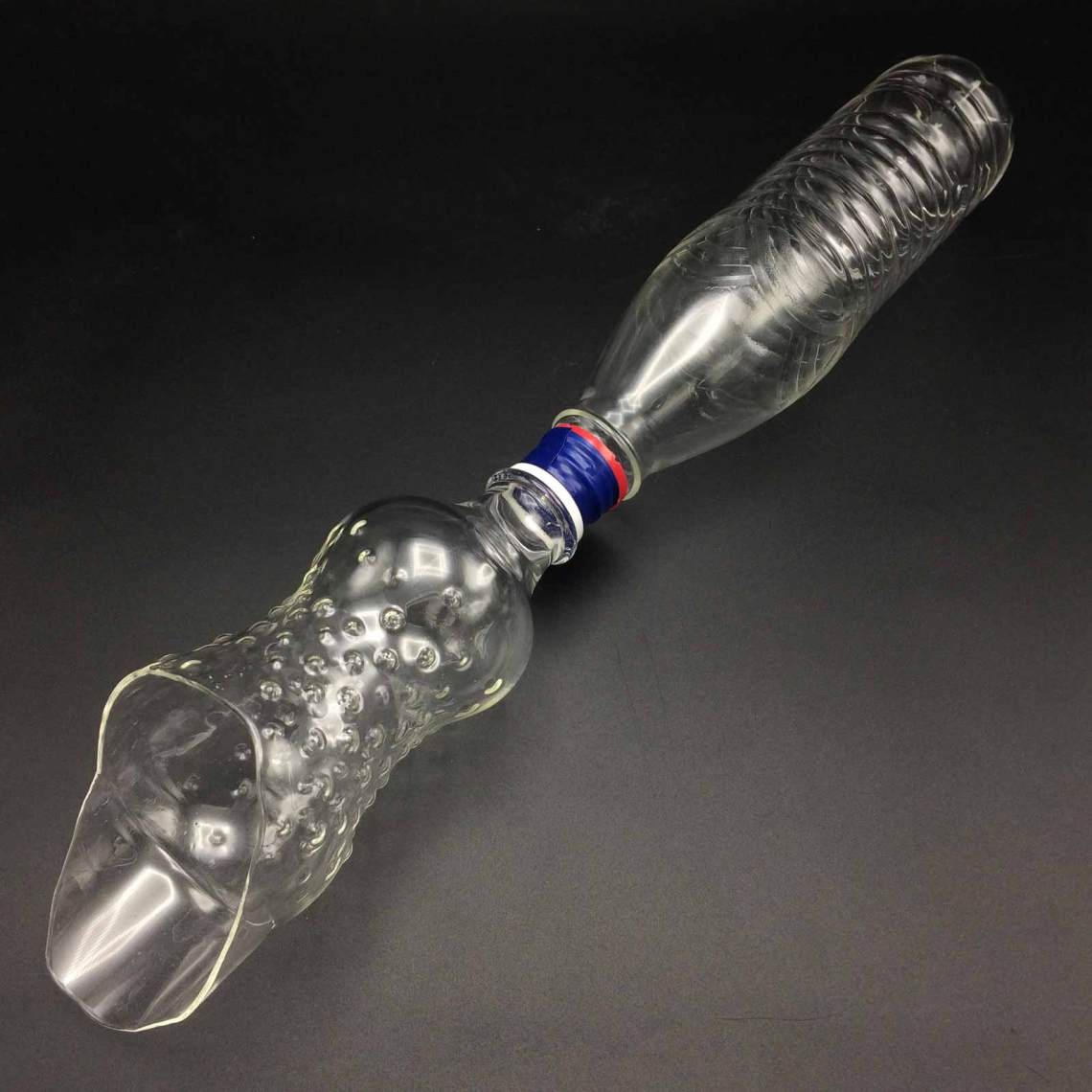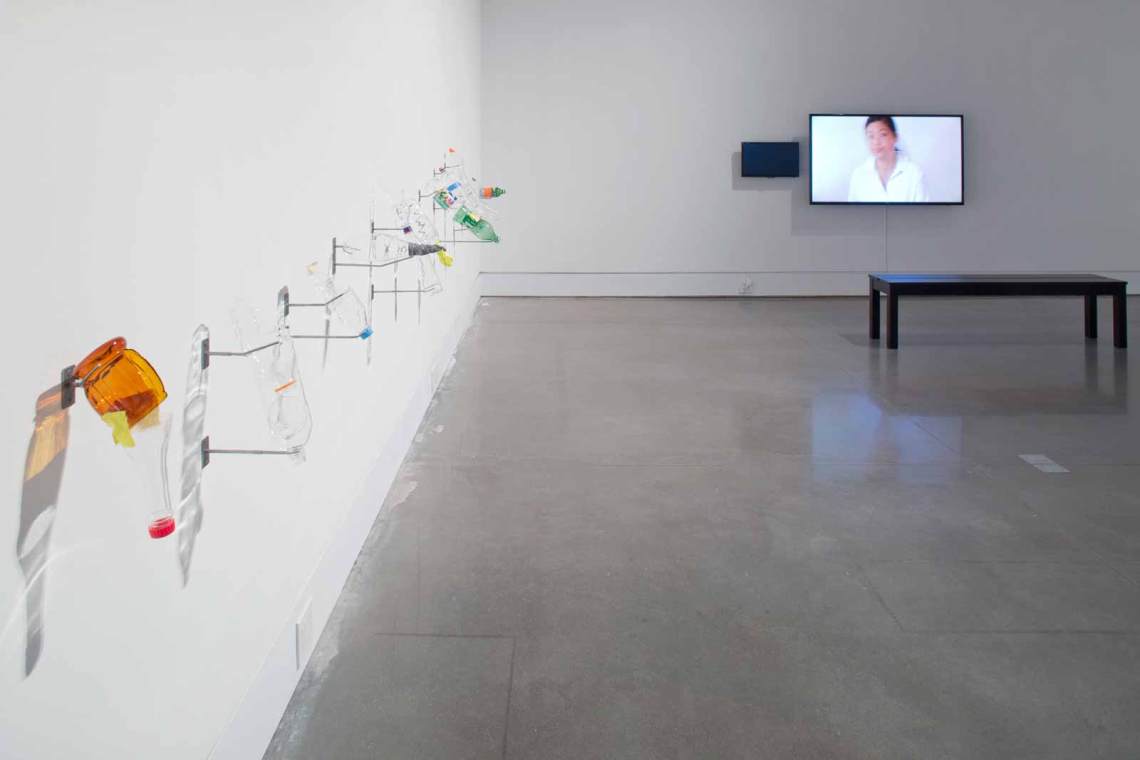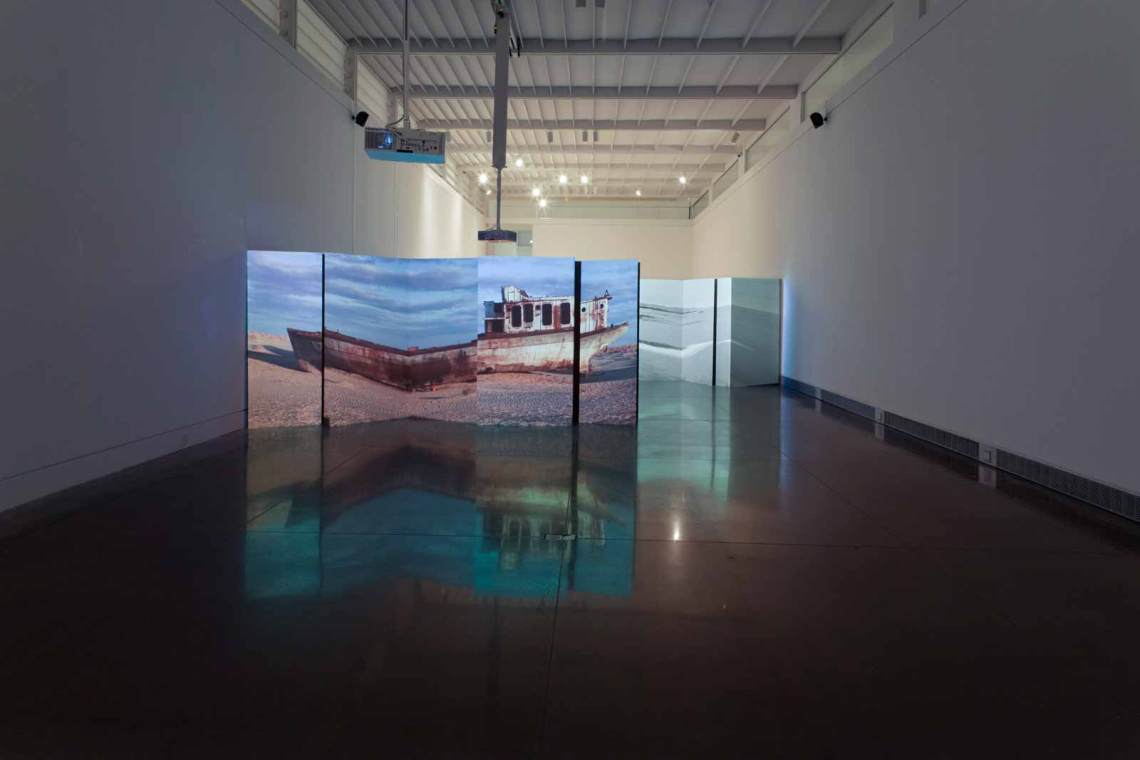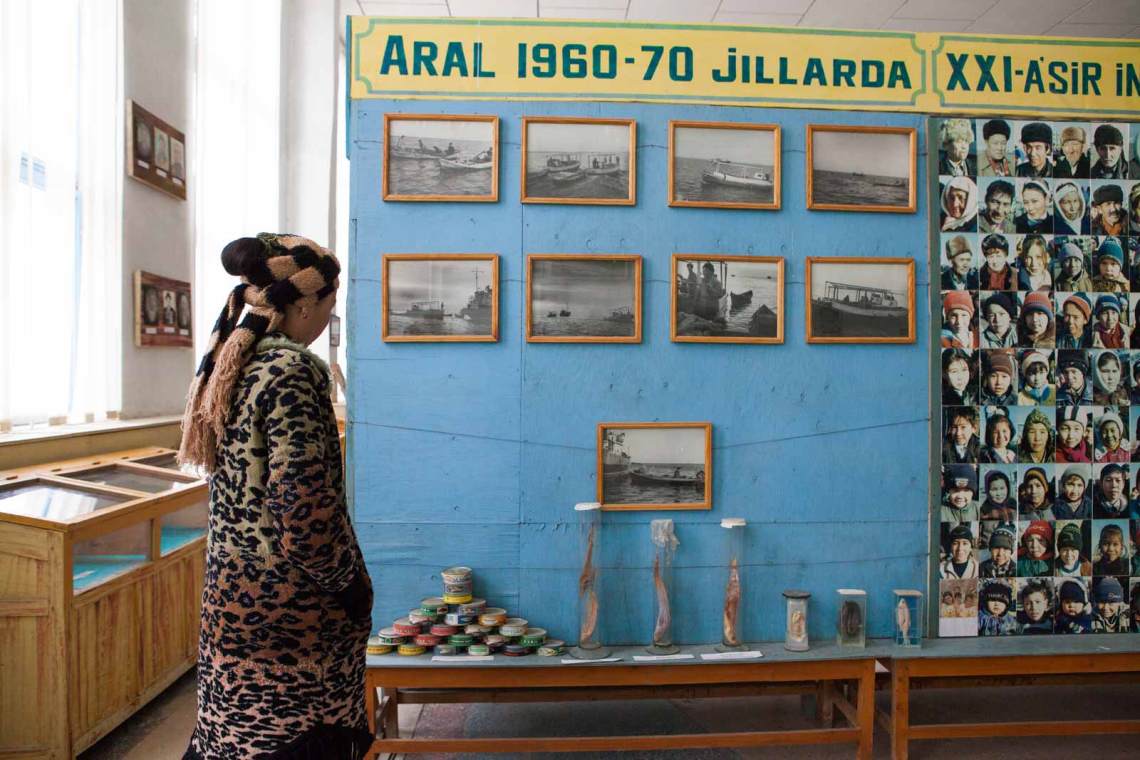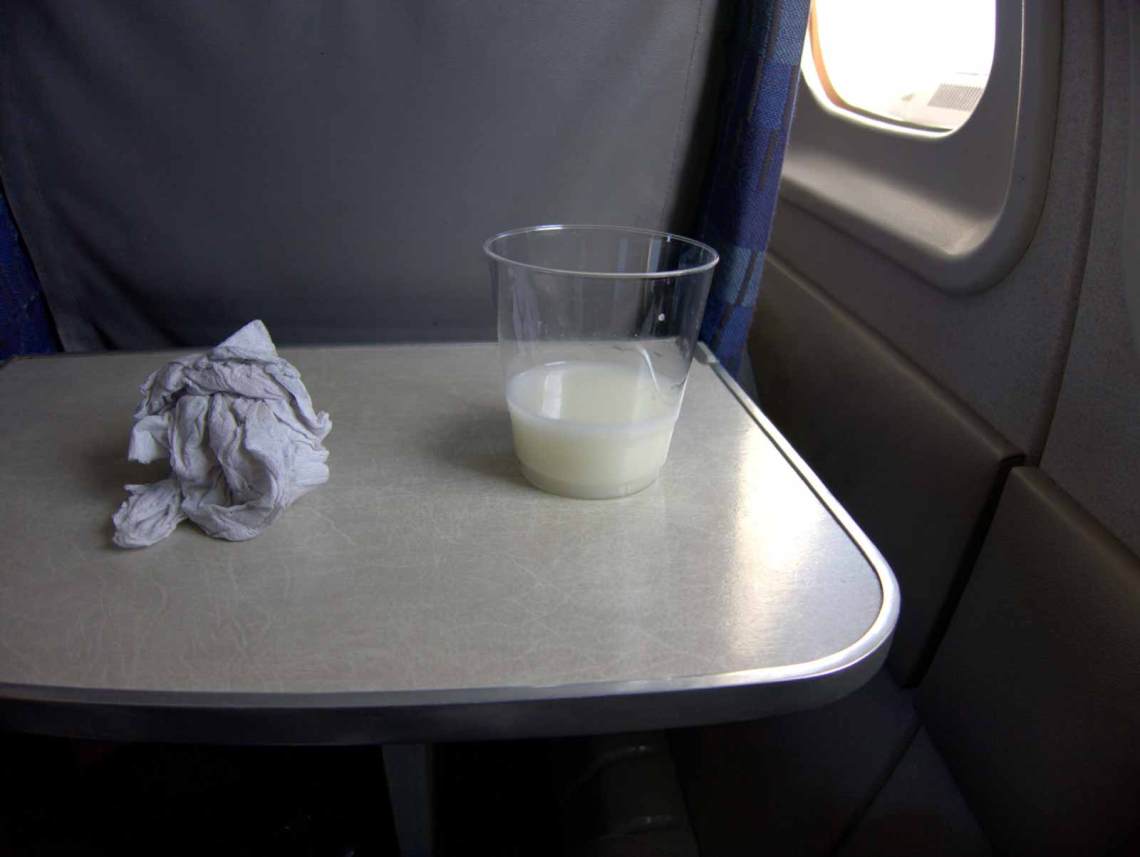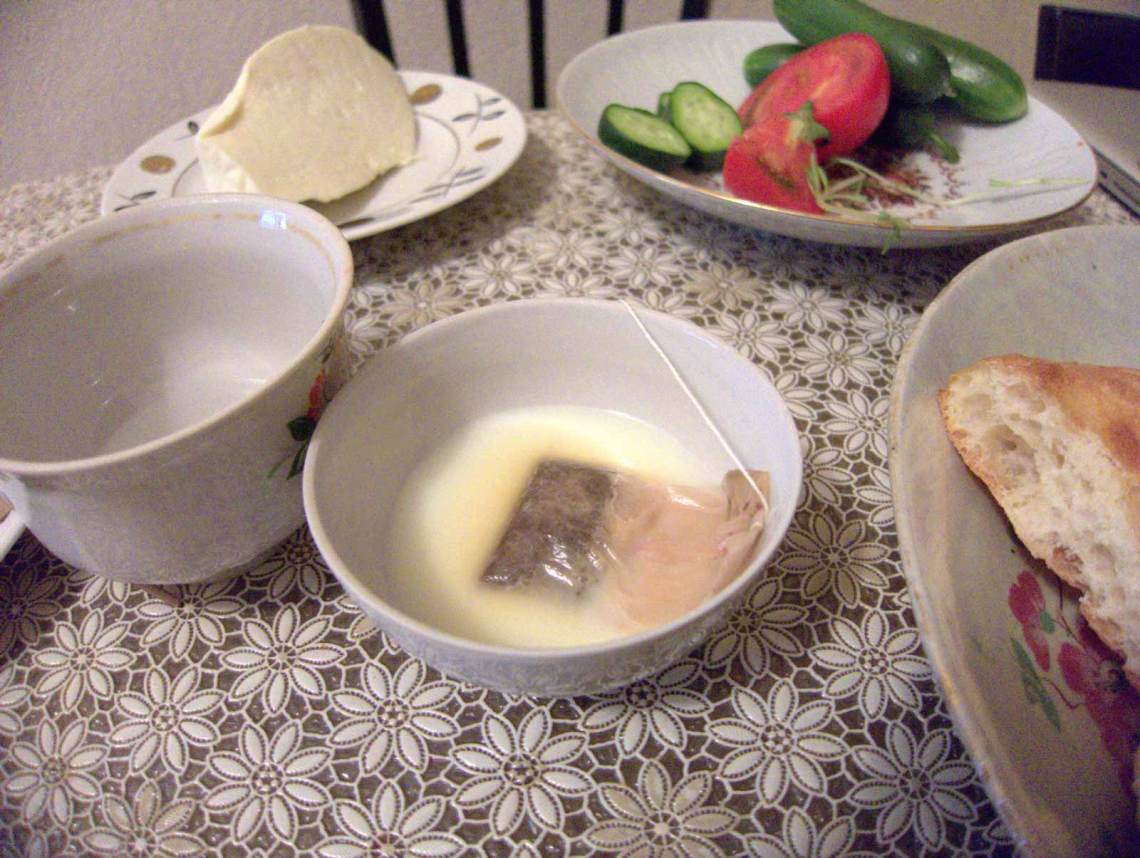The first artwork in “Patty Chang: The Wandering Lake, 2009–2017,” currently on view at the Queens Museum, is a video depicting a fishing boat beached on an Uzbek desert of pale sand, projected on a screen creased like accordion-folded paper. Patty Chang appears in the frame, toting a red plastic bucket and sponge, and begins to rinse the rust from the boat’s shell. She’s dressed for the cold; the wind whips her hair and her cheeks are raw as she swabs the sponge over the hull, wrings it out, and dips it back into the bucket. Red rubber gloves cover her hands.
On a second screen, Chang performs the same ablutions for a white whale half-submerged in the coastal shallows off Newfoundland’s Fogo Island. The whale is small and its body might be mistaken for a spit of rock, except for the pull of the tide giving it a subtle sense of lifelike movement. Chang scrubs the animal’s back, plunging her sponge into saltwater that rises to her knees. She looks small in an immense landscape of crashing gray waves. You hear the rasping cries of seagulls. Both cleansings are pointless, even absurd, but Chang executes them with a devotion that gives these works a queer poignancy.
Chang’s career began in the New York City performance art scene of the 1990s. Her performances and videos from this period, bearing the influence of Marina Abramović and Joseph Beuys, depict grueling feats of endurance mixed with gleefully masochistic slapstick. In a 2003 interview with curator Eve Oishi, Chang said, “I am always doing an Asian woman,” her phrasing reminiscent of stand-up comedy. Her dissections of gendered coercion and Asian stereotyping give her works from this era their humor and bite. In Untitled (Eels) (1999), she squirms ecstatically in a wriggling, wet blouse; in Gong Li With the Wind (1996), a hoop skirt-clad Chang gorges on beans and defecates. In a 1999 performance titled Fountain, Chang laboriously drank water from the surface of a mirror for thirty to forty-five minutes, captured on a video in which she appeared to kiss her own image. The first time she performed the piece, she nearly vomited. In 2005, New York Times art critic Holland Cotter called her “hair-raisingly narcissistic” and “one of our most consistently exciting artists” in the same review.
Beginning with her 2005 video Shangri-La, Chang’s work took an expansive and self-effacing turn, of which the works at the Queens Museum represent the most satisfying realization to date. “The Wandering Lake” is about flows of people and water, and the ways in which a shared environment produces shared losses. Through video, sculpture, photography, as well as a book (a florilegium of parenting handbooks, art theory, and sociology spliced into her travel diary), it follows Chang’s odysseys to Western China’s Xinjiang Uyghur Autonomous Region; Muynak, Uzbekistan, a former seaport on the receded Aral Sea; Fogo, an island and former fishing hub in Newfoundland; and Danjiangkou, a site of China’s South-to-North Water Transfer Project. At each of these sites, human intervention has made water systems go awry. In sweeping portraits of landscapes and societies in flux, Chang retains her eye for the absurd and the ersatz, but goes further to probe the enormous loss she observes.
In Minor (2010), Chang travels to Western China in search of Lop Nur, a lake whose position migrates with unusually rapid cycles of sedimentation. She meets Munira, a woman from the Uyghur minority, and Wulina, who is Han Chinese—ethnic groups with a history of violent clashes; each woman supplies a word to describe her own cultural identity, and Chang stages a slapdash performance in which she weaves the characters for both words into the chainlink walls of two cotton trucks, which are driven down a dirt road during harvest time. In Configurations (2017), she tracks an immense state-sponsored project in China to divert the waters of the Yellow River and Yangtze River, displacing some 345,000 villagers. The three-channel video, displayed on opposite walls of the gallery, juxtaposes Chang’s film clips, photographs, and narration of the journey with footage of the artist urinating into a potted plant. It’s accompanied by a series of sculptures titled Glass Urinary Devices (2016–2017), crude soda bottle-shaped replicas of the device she used to pee standing up during her trip.
Advertisement
Chang’s son was born a few years after she began the project, and her father died in 2013. Allusions to pregnancy, child-rearing, life, and death run throughout “The Wandering Lake”—Chang collects and photographs breast milk during her second trip to Uzbekistan as a silent protest against the country’s censorship. But despite the density of documentary and historical details, these personal events are seldom referenced directly. Only in a short video titled Que Sera, Sera (2013) does she make the connection explicit. Her father lies in his hospital bed under an orange plaid blanket, chest gently rising and falling, while Chang bounces her son in her arms and sings.
Alternating between particular and general experience—the death of one whale, the death of a parent, and the end of a way of life for hundreds of thousands of Chinese villagers—Chang demonstrates the power of arbitrary acts, executed with devotion, to produce their own truth. This is a guide to mourning; but Chang widens the scope to include political conflict and environmental degradation, and argues that, despite the losses we’ve incurred, we are still collaborators in the making of our worlds.
“Patty Chang: The Wandering Lake, 2009–2017” is on view at the Queens Museum through February 18.


